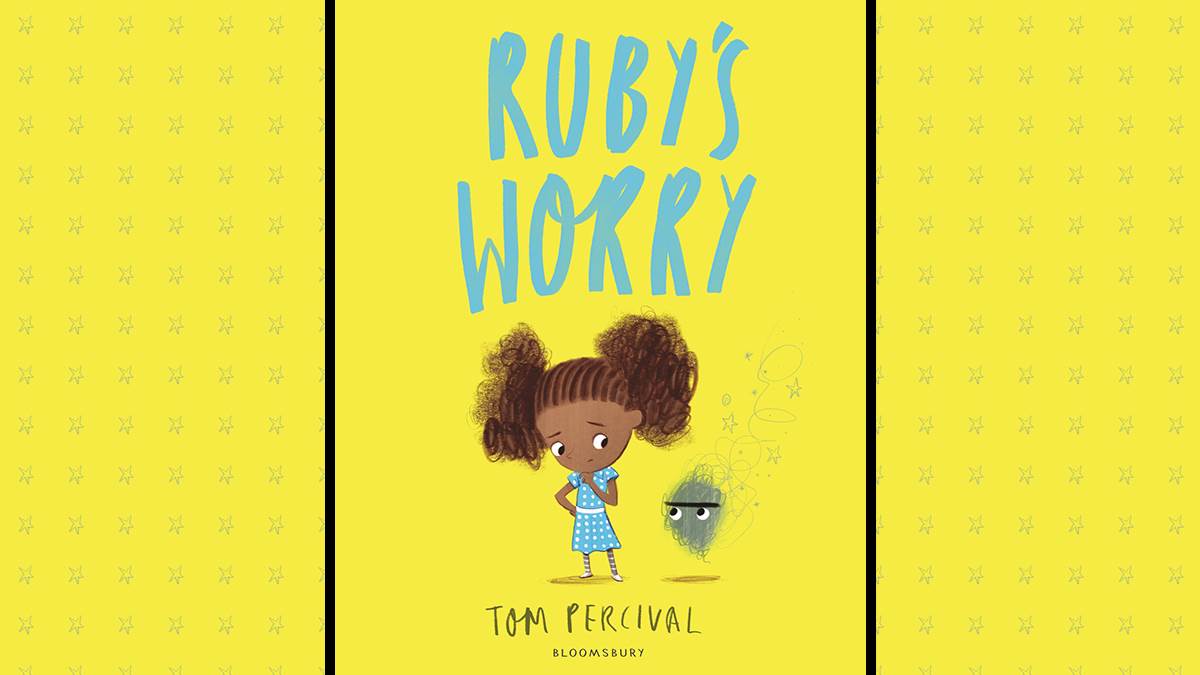How books could help mental health and ease anxiety in children
Published on: 28 August 2018 Author: Tom Percival
Ruby's Worry is a sensitive and charming new picture book all about a young girl dealing with anxiety. Author Tom Percival tells us why it's so important for children to be able to talk about their fears...

Worry. Stress. Anxiety. Tax Returns.
These words don't make us feel good. They're a bit like those bright yellow caterpillars that warn birds not to eat them because they're poisonous. In fact, just typing them out makes my stomach feel knotted, especially the last two... I guess that means I'm susceptible to stress.
However, when I was a teenager I was remarkably relaxed. I didn't have a care in the world and thought that anyone who got 'stressed out' was just wasting their time. They should have all been like me - completely 'chilled', which was exactly the sort of thing I said back then, along with 'stoked' (I'm feeling excited), 'puce' (that is very horrible indeed), and 'minted' (hooray! I have got enough money for the weekend).
But it was the nineties, so you have to give me a break.
Now, you might think that it's rare for a teenager to feel so relaxed, and you'd be right - it was a complete fabrication.
I was actually riddled with insecurity and self-doubt. I had just bundled all those unwanted feelings into a tight ball and stuffed them into a deep, dark hole, which I papered over with a make-believe calm. The strangest thing about all this was that I managed to convince myself it was true. I'm either very convincing, or very gullible - I'm not sure which.
I suppose I saw my anxiety as a weakness and back then, I wasn't prepared to accept that. Now that I'm *cough* years old, I appreciate that identifying a weaknesses is the first step to resolving it, but back then I was too busy being bad at playing guitar to consider that sort of thing. So I just pretended that I rolled smoothly through life - easy come, easy go - and that strategy worked perfectly.
Right up until the day that it didn't.
Looking back, it's blindingly obvious that you can't bottle up all the thoughts and feelings that you don't want to have. Of course all that pressure is going to burst out. It's just a case of how - and when.
I was in my twenties when I had my first (and so far only) panic attack. Prior to that I assumed that panic attacks happened when you were really scared of something, and I was half right - it's just that in my case there was no actual threat present.
I was just taking a train journey on a sunny afternoon when I felt a sudden and overwhelming sense of dread. For some reason, my heart was pounding as though I was about to jump out of a plane with only a plastic bag for a parachute. The feeling intensified when I realised I couldn't understand any of the train announcements, or anything that anyone around me was saying. All I could hear was an indecipherable gobble-de-gook. The whole thing lasted for about five minutes, during which I used up a lifetime's supply of adrenaline and was completely terrified.
It wasn't much fun.
Shortly after that, I realised that you can't ignore anxiety, or any other problem in your life. It sounds obvious, but when you're in a position of denial, about anything, you can never be truly happy.
That's why I decided to focus on the idea of anxiety in my new picture book, Ruby's Worry.
Kids have just as many worries and concerns as adults do. The erosion of a friendship with a 'once-best-friend' will be just as intense to a 6-year-old as the breakdown of an adult relationship. Unpicking those raw emotional threads is just as hard when you're a child - possibly harder, because everything is new. When you're a child, you don't have a huge pool of previous experience to draw from.
Why it's good to talk about anxiety
I feel it's important for children, and their parents, to be offered books that might help them navigate their emotional journeys.
We encourage our kids to eat healthily and get enough exercise, so it makes sense that we also help them to understand their emotional wellbeing and focus on exploring ways to improve mental health.
In physical fitness you never say, 'There, I'm 100% fit now, I'll just sit back and take it easy!' You're always working on it - developing and maintaining strength, endurance, speed, agility and everything that makes for a healthy body. We should apply the same attitude towards mental health - it's a work in progress, not a set destination.
So the message in Ruby's Worry is simple and direct: if you're worried about something, anything, talk about it. Don't hide it away, or pretend it's not there.
I didn't specify what Ruby is worried about in the book because ultimately, it doesn't matter what the actual problem is - the solution will always be found by opening up about your worries and talking them through with someone, ideally someone thoughtful, sensible and sensitive!
Maybe it's not going to be the whole solution, but it's always the starting point, and once you know where to start, who knows how far you'll go?
Read our review of Ruby's Worry
How books help children discuss difficult feelings - and feel less alone
Topics: Picture book, Fear, Personal/social issues, Mental health, Features






Add a comment